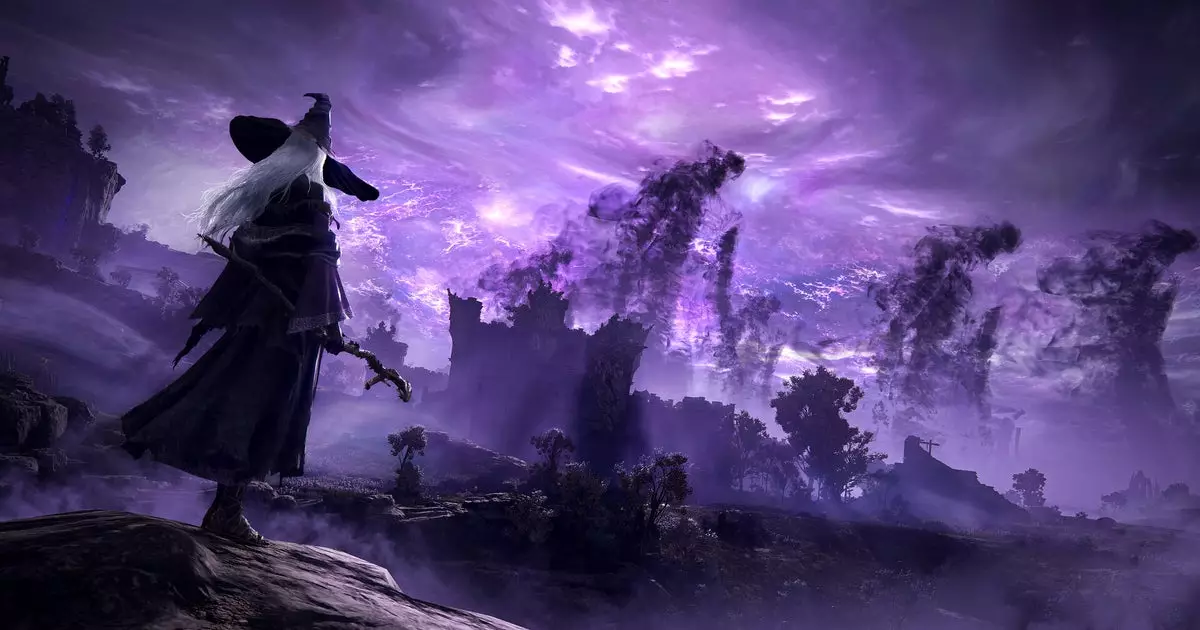The gaming community greeted the announcement of “Elden Ring: Nightreign” with a mix of excitement and disappointment. While many fans were eager for a new installment in the acclaimed Elden Ring universe, the shift towards a co-op-centric gameplay model sparked a significant reaction. In this article, we will delve deep into what Nightreign offers players, examine its mechanics, and discuss the broader implications for the Elden Ring franchise.
“Elden Ring: Nightreign” beckons players into a reimagined Limgrave map that exists in an alternate universe. Central to the game’s structure are eight pre-defined characters, each offering unique abilities suitable for cooperative gameplay. Players embark on a series of 15-minute in-game days, battling lesser foes while strategically preparing for boss encounters. The looming threat of deadly weather, which restricts movement and ultimately leads to an arena-style boss fight, evokes elements reminiscent of battle royale titles. This fresh approach not only revitalizes the beloved Elden Ring lore but also introduces streamlined mechanics focused on team dynamics and tactical gameplay.
However, amidst the thrills lies an air of conjecture regarding how the game balances its focus on co-op play and solo experiences. It’s noteworthy that each gaming session culminates in a confrontation with one of eight formidable antagonists, making it imperative for players to collaborate and optimize their character builds for success.
One distinguishing feature of Nightreign is its evolving landscape. Players will discover variations each time they return to the map, with unexpected hazards and environmental changes that heighten replay value. With surprises such as periodic volcanic eruptions and recurring field bosses, the game instills a sense of unpredictability. This design choice promises that players will not simply grind through the same set encounters ad nauseam.
Interestingly, the implementation of a fixed map with eight “chapters” that can theoretically be completed in a single day raises questions about player engagement in the long term. To remedy potential stagnation, developers have introduced dynamic terrain alterations that not only shake up combat strategies but also maintain a sense of novelty throughout the player experience.
FromSoftware has always been synonymous with meticulous design and immersive gameplay. In many ways, Nightreign represents a decisive step forward in their experimentation with multiplayer mechanics. With co-op as the primary focus, players can join forces in groups of three, building relationships through shared objectives. However, this choice raises skepticism about the experience awaiting those who prefer a solo adventure.
The silver lining for single-player enthusiasts is that Nightreign can indeed be tackled alone. Developers have made adjustments to ensure the game remains accessible for solo players by scaling down enemy health pools and omitting the PvP element, allowing players to engage at their own pace. Nevertheless, certain aspects—like the absence of Spirit Ash items—suggest that while solo play is permitted, it may not be fully encouraged or supported.
In the context of previous FromSoftware titles, such as Dark Souls and Bloodborne, the solitary journey has often been enriched by the possibility of assistance via NPC summons. The elimination of such mechanics signifies a potential oversight in catering to dedicated fans who thrive on exploration at their own speed.
The revelation that Nightreign emphasizes co-op mechanics raises flags regarding the direction of future FromSoftware titles. Game Director Junya Ishizaki stated that there are no immediate plans for subsequent co-op-focused entries, leaving fans with a mixture of optimism and skepticism. For those who thrive on the comprehensive lore and singular challenges posed by the series, the entertainment landscape might feel uncertain.
While inclusivity for multiplayer engagement has been embraced, the core experience that fans revere hinges on rich storytelling and individual achievement. Therefore, one cannot help but question whether pursuing a co-op model may dilute the essence of what makes the Elden Ring universe intriguing.
“Elden Ring: Nightreign” invites players to engage in a fresh blend of cooperative mechanics and beloved Elden Ring lore. While the excitement surrounding its unveiling is palpable, ongoing discussions highlight a complex balance between multiplayer enthusiasm and solo gameplay. As fans prepare for the impending launch, they must confront a shift in how immersive narratives and dynamic encounters are constructed within a multiplayer framework.
This transition may represent a significant evolution within FromSoftware’s design philosophy, promising to reshape our understanding of co-op experiences in challenging environments. Whether Nightreign stands as a historic pivot or a fleeting experiment remains to be seen—nonetheless, the dialogue surrounding this release is likely to continue stirring the pot within the gaming community for some time.

